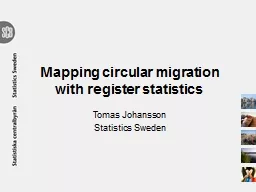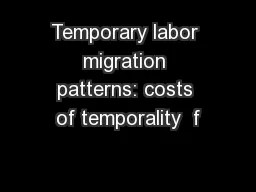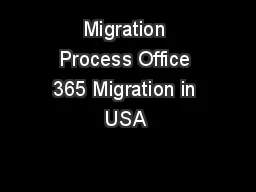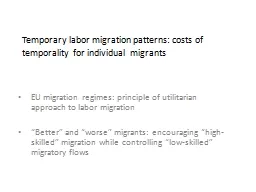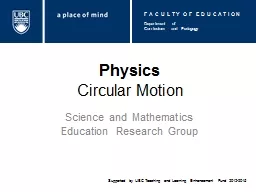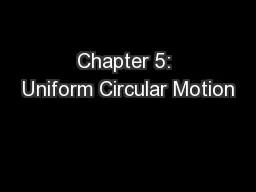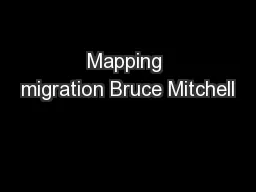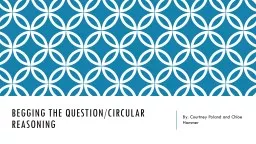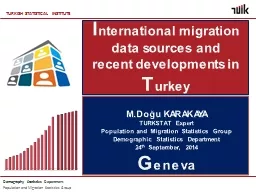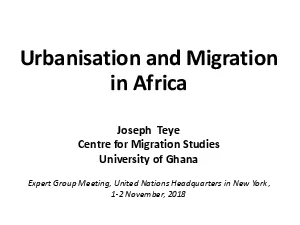PPT-Mapping circular migration with register statistics
Author : myesha-ticknor | Published Date : 2016-03-02
Tomas Johansson Statistics Sweden Sweden Population 2013 9 644 864 16 foreign born Immigrants 2013 115 845 Emigrants 2013 50 715 International Workshop on Methodological
Presentation Embed Code
Download Presentation
Download Presentation The PPT/PDF document "Mapping circular migration with register..." is the property of its rightful owner. Permission is granted to download and print the materials on this website for personal, non-commercial use only, and to display it on your personal computer provided you do not modify the materials and that you retain all copyright notices contained in the materials. By downloading content from our website, you accept the terms of this agreement.
Mapping circular migration with register statistics: Transcript
Download Rules Of Document
"Mapping circular migration with register statistics"The content belongs to its owner. You may download and print it for personal use, without modification, and keep all copyright notices. By downloading, you agree to these terms.
Related Documents

